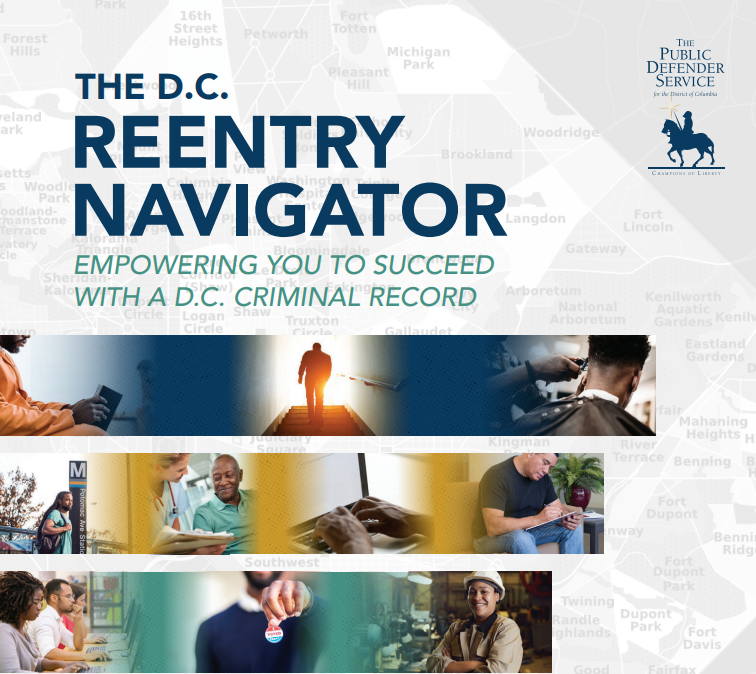Today, the ACLU of the District of Columbia’s oldest case came to a close, with the court’s approval of a settlement agreement in LaShawn A. v. Muriel Bowser, a class action that, over the course of 32 years, transformed the D.C. foster care system from a dysfunctional mess to what the judge called “a national model.”
When we filed the case in 1989, the District of Columbia’s foster care system was in total disarray. More than 40% of positions were vacant, and the agency didn’t even know how many active employees it actually had. Social workers were untrained and had impossible caseloads of more than 100 children each. Reports of child abuse went uninvestigated. Children were kept in “90-day emergency placements” for years. Foster homes were overcrowded and unsafe. Medication was inappropriately used to control children’s behavior. There were no specialized placements for children with specialized needs, no reunification services for families, and little if any planning for children in foster care. Although federal funding was available to state foster care agencies, the District of Columbia received none because it couldn’t figure out how to apply.
Thirty-two years ago this month, ACLU-DC (then called the ACLU of the National Capital Area), together with the Children’s Rights Project of the National ACLU, filed LaShawn A. v. Marion Barry with the goal of reforming this broken system. Lead plaintiff LaShawn A., who was then 4 years old, had been in “emergency” care for more than two years, during which time the District had failed to provide her mother with any services to assist in reunification and had failed to provide LaShawn with services she needed for her serious emotional and developmental problems. Other plaintiffs had similar stories.
The case went to trial in February 1991. In his post-trial opinion, U.S. District Judge Thomas F. Hogan (a Ronald Reagan appointee) described what the evidence had shown: “District children relegated to entire childhoods spent in foster care drift. … A lost generation of children whose tragic plight is being repeated every day.” He ruled that the District was failing to meet constitutional and statutory minimum standards of care for the children in its custody, and entered an order requiring an across-the-board overhaul of the District’s child welfare system.
The District government essentially ignored the court’s order. After many efforts by the plaintiffs and the court to achieve compliance, Judge Hogan held the District in contempt of court in April 1995, and in May 1995 he appointed a Receiver to run the agency, removing its operation from the incompetent hands of the District government. The District appealed but lost.
Under the Receiver’s direction, the agency finally began to make progress, and in 2001 the plaintiffs (now represented by Children’s Rights, Inc., because the Children’s Rights Project had left the ACLU and become an independent entity) and the District agreed to end the Receivership in exchange for additional promised reforms. One of the agreed changes was the promotion of the Child and Family Services Agency to be an independent cabinet-level agency reporting directly to the Mayor. Until then, it had been three levels removed: a Division of the Family Services Administration of the Commission on Social Services of the Department of Human Services.
Back under District control, however, the agency began backsliding, and in 2008 things came to a head. In January of that year, the bodies of four deceased children (ages 5, 6, 11, and 17) were discovered in the home of Banita Jacks. Agency investigators had been alerted to potential problems at the Jacks home for more than a year but had not adequately investigated. In July, the Washington Post reported that a six-month-old had died of an undetermined cause almost three months after becoming the subject of a report of child neglect, but the investigator assigned to the case had never visited the infant or his home; she reportedly was carrying 50 open investigative cases at the time and had never visited 17 of those 50 children. The agency’s director resigned. Reports of abuse and neglect skyrocketed, causing caseloads to balloon and many employees to resign, which caused the caseloads of the remaining employees to explode.
A new director was appointed, and substantial new resources were directed to the agency. In 2010 the parties optimistically agreed to a new “Implementation and Exit Plan,” but full implementation remained elusive, and exit was therefore not in the cards. By 2019, however, the agency was finally doing well in meeting most of its goals, and the plaintiffs (now represented by A Better Childhood, Inc., the new organization led by Marcia Lowry, who had been plaintiffs’ lead counsel since the beginning of the case) and the defendants agreed to an Exit and Sustainability Plan in the hope of ending the court’s involvement in ongoing supervision of the agency. Performance continued to improve, and in August 2020 the parties reached a tentative settlement of the case. Because settlements in class actions must be approved by the court, the court scheduled a public “fairness hearing” for June 1, 2021 and ordered notice to be sent to all class members.
That hearing was held today. No member of the class objected to the settlement, and Judge Hogan—who has presided over the case since it was filed—approved it, formally closing the case, three weeks short of its 32nd anniversary. He praised all the parties for their hard work over many years, and observed what a powerful tool a federal class action, pursued over many years, can be.
Institutional change can be lengthy and difficult, but worthwhile. Reports of potential abuse or neglect are now promptly investigated, and when confirmed, child victims can expect to receive caring, professional treatment from trained caseworkers. They strive for prompt reunification with parents or other family members when possible, or prompt adoption by a suitable family when reunification is not possible.
Six mayors and 32 years later, the case is closed, but the ACLU-DC and A Better Childhood will continue to monitor the agency’s performance for an additional year, retaining the ability to file an action alleging breach of the settlement agreement until June 30, 2022.

